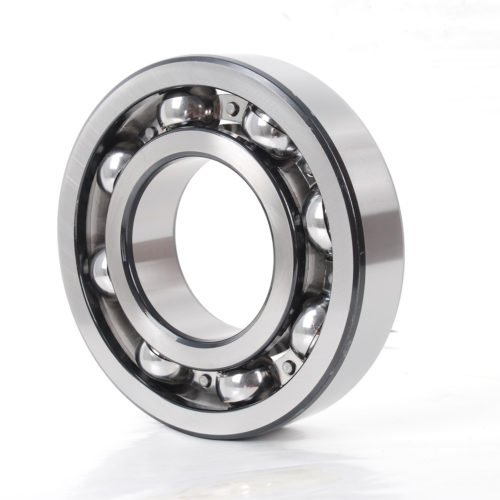Groove ball bearings are a type of rolling-element bearing commonly used in a variety of applications, including automotive, industrial, and aerospace. They are designed to support radial and axial loads and are often used in applications where high speeds and low friction are required.
Groove ball bearings consist of an inner ring, an outer ring, and a set of balls or rollers that are held in place by a cage. The inner and outer rings are usually made of steel, while the balls or rollers are made of a variety of materials, such as steel, ceramic, or plastic.
The design of groove ball bearings allows them to handle both radial and axial loads. Radial loads are forces that act perpendicular to the axis of rotation, while axial loads are forces that act parallel to the axis of rotation. Groove ball bearings can also handle a combination of radial and axial loads.
The size and design of groove ball bearings can vary depending on the specific application. Some common types of groove ball bearings include:
Single-row deep groove ball bearings: These bearings are the most common type of groove ball bearing and can handle both radial and axial loads.
Double-row deep groove ball bearings: These bearings have two rows of balls and can handle higher radial and axial loads than single-row bearings.
Angular contact ball bearings: These bearings are designed to handle mostly axial loads and are often used in applications where high speed and accuracy are required.
Self-aligning ball bearings: These bearings have two rows of balls and a spherical outer ring that allows them to compensate for misalignment between the shaft and the housing.
Groove ball bearings require proper lubrication and maintenance to ensure long service life and reliable operation. Deep Groove Ball Bearings manufacturers The manufacturer’s instructions should be followed for installation, lubrication, and maintenance of groove ball bearings.
Determining the appropriate size and design of groove ball bearings for a specific application requires consideration of several factors, including the load requirements, operating speed, operating temperature, and environmental conditions.
Here are some steps to follow to determine the appropriate size and design of groove ball bearings for your application:
Determine the load requirements: The load requirements for the application will determine the size and type of groove ball bearings needed. The load capacity of the bearing should be greater than the maximum load that will be applied to the bearing.
Determine the operating speed: The operating speed of the application will determine the type of bearing that is needed. Higher speeds typically require bearings with higher precision and lower friction.
Determine the operating temperature: The operating temperature of the application will also affect the type of bearing that is needed. High temperatures can cause the lubricant to break down, which can affect the performance of the bearing.
Consider environmental factors: Environmental factors such as moisture, dust, and chemicals can also affect the performance of the bearing. Bearings may need to be sealed or have special coatings to protect against these factors.
Consult with a bearing supplier: A bearing supplier can provide guidance on the appropriate size and design of groove ball bearings for a specific application. They can also provide information on different types of bearings and their performance characteristics.
When selecting groove ball bearings, it’s important to choose bearings that are manufactured to the appropriate standards and are designed for the specific application. Proper installation and maintenance are also important for ensuring reliable operation and long service life of the bearings.
